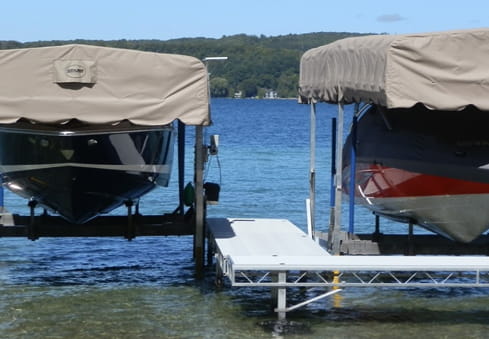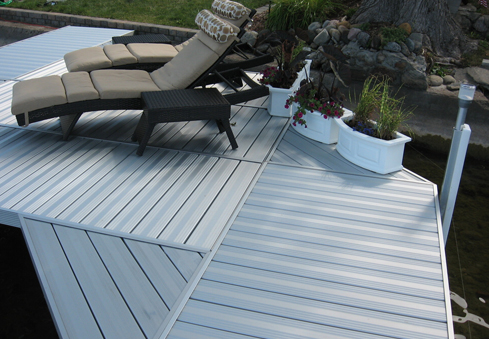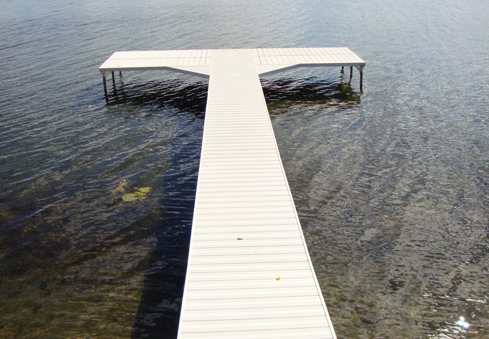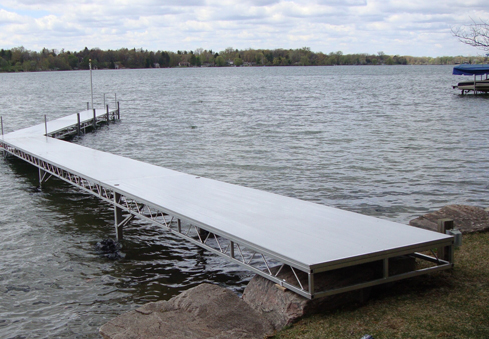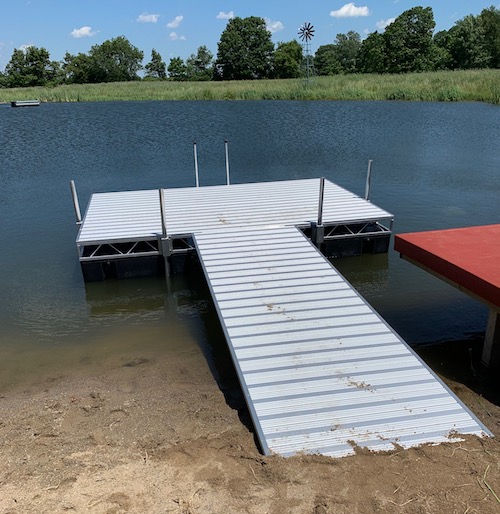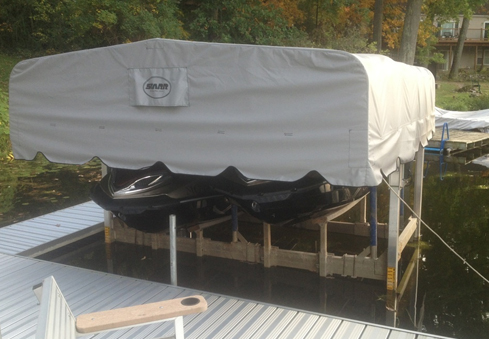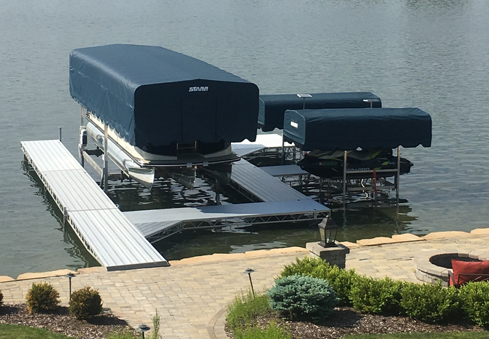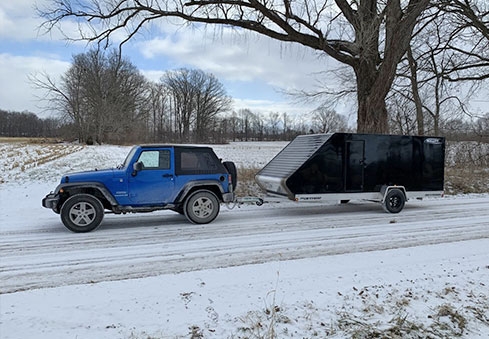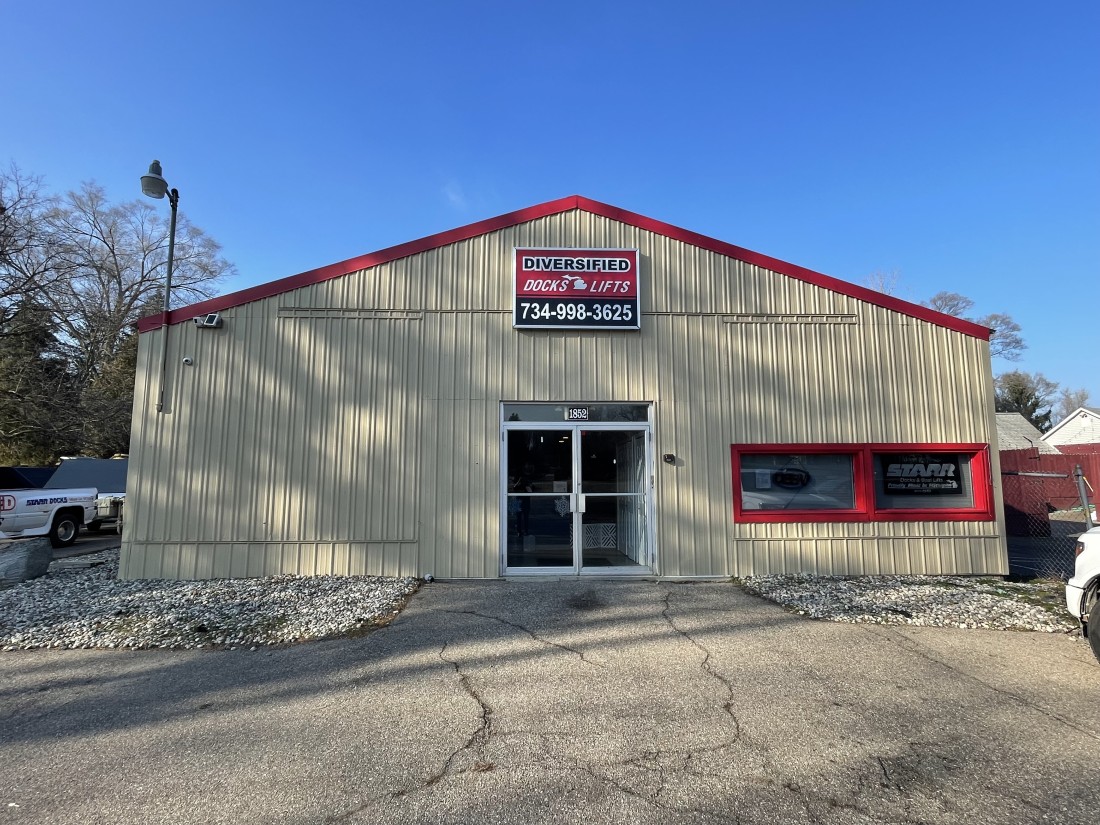Common Boat Dock, Marine Construction, & Snowmobile Trailer Questions
Are you interested in building a new boat dock for your summer water sports? From paddle boats to compact pontoons & swim rafts, our FAQ section includes some of our most commonly asked questions from our clients.
If you don’t find your answer here, don’t worry, you aren’t in deep water. We are happy to answer your questions by phone at (734) 998-3625 or in person when you enter our store.
How do you choose the right dock?
We recommend contacting a local professional, like our expert team at Diversified Docks & Lifts. A lakefront professional will make different recommendations based on water depth, the lake bottom, and your shoreline. They will also make recommendations based on the dock's hardware.
Your needs may differ depending on whether you plan to remove the dock, leave it in the water, or hire someone to provide that service. Having the right product will ensure years of stress-free boating seasons.
What is the difference between plastic decking dock and aluminum surface dock?
Aluminum is a durable metal commonly used in the aviation, automotive, and marine industries. Over time with UVA and UVB, plastic decking will break down, become brittle, and start to crack. Most plastic decking will need to be replaced within 10-15 years. The aluminum decking will stay strong for 30+ years.
Does anodized or powder coated aluminum get hot?
No. Anodized or powder-coated aluminum will keep the surface nice and cool. Anodized (Kool Dock) is the coolest of all the decking options, including plastic. Bare aluminum gets too hot to walk on, so we do not sell products that are not anodized or powder coated.
What is the difference between roll-in dock vs. stationary dock?
A roll-in dock is the easiest to install and remove in most situations. One big misconception about a roll-in dock is that it does not work in mucky conditions. Starr Roll-in docks shine in muck due to their topside leveling and ability to pull the wheels out of the muck without getting in the water (see associate for details).
A roll-in dock is also considered modular. You can change your layout without needing new parts or pieces. Stationary docks typically require additional parts, and drilling may be necessary. A stationary dock is a lightweight, user-friendly option for someone with limited storage space.
When is floating dock the right choice?
Floating docks can be the right choice in a few different situations. If you have water depths greater than 9 feet, your lake bottom is extremely mucky or soft, or you experience extreme water fluctuation, floating docks may suit you. A free-standing dock can become unstable in deeper water, while the floating dock will maintain its stability. A floating dock does not use the lake bottom for support and is considered self-leveling.
Our floating dock systems are efficient and reliable. Call us today to clarify whether one is right for you.
What is the right size lift for my boat or jet ski?
Knowing the boat's accurate dry and motor weights is crucial in choosing the correct lift capacity. Most manufacturers state that they only want 80 percent of the capacity used. If you have a 4,000 lb. lift, we only recommend putting 3,200 lbs. on it. Remember, overkill is never better, as you want to find a lift that has the correct lift power.
Having the boat appropriately positioned on a lift is crucial. If you have a 4,000 lb lift, it was designed for 2,000 lbs. on the front beam and 2000 lbs. on the rear. To avoid your weight shifting with liquid flowing around, keep ballast tanks full when lifting a boat! One that isn’t will overload your lift and void your warranty.
What kind of maintenance does a boat lift require?
On Starr lifts, greasable fittings are now standard. Greasing your cable once each season will help to extend its life and keep it running smoothly without friction. Refer to the manufacturer for maintenance recommendations.
What Types of Enclosed Snowmobile Trailers Are There?
Diversified Docks & Lifts currently offer two types of high-quality enclosed snowmobile trailers. We sell Pro-Starr Hybrid and Pro-Starr Bullitt series trailers; both provide easy access for your snowmobile, bike, or ATV. Head over to our snowmobile trailer page to see both options side by side and compare to find out which one is better for you.

